Lecture 8 Energy Conversion Technologies: Fossil, Nuclear, Hydro, and Others
October 30, 2023
Sample analytic questions
- How much coal can be saved/emissions can be mitigated if China’s average coal power efficiency increased by 1 percentage point?
- Why combined heat and power saves energy?
- What are the challenges for nuclear expansion?
- How to best use pumped-dydro storage?
Thermodynamics
- Thermodynamic efficiency
- Comparing different technologies
- Thermodynamics provides physic limits
Heat engine
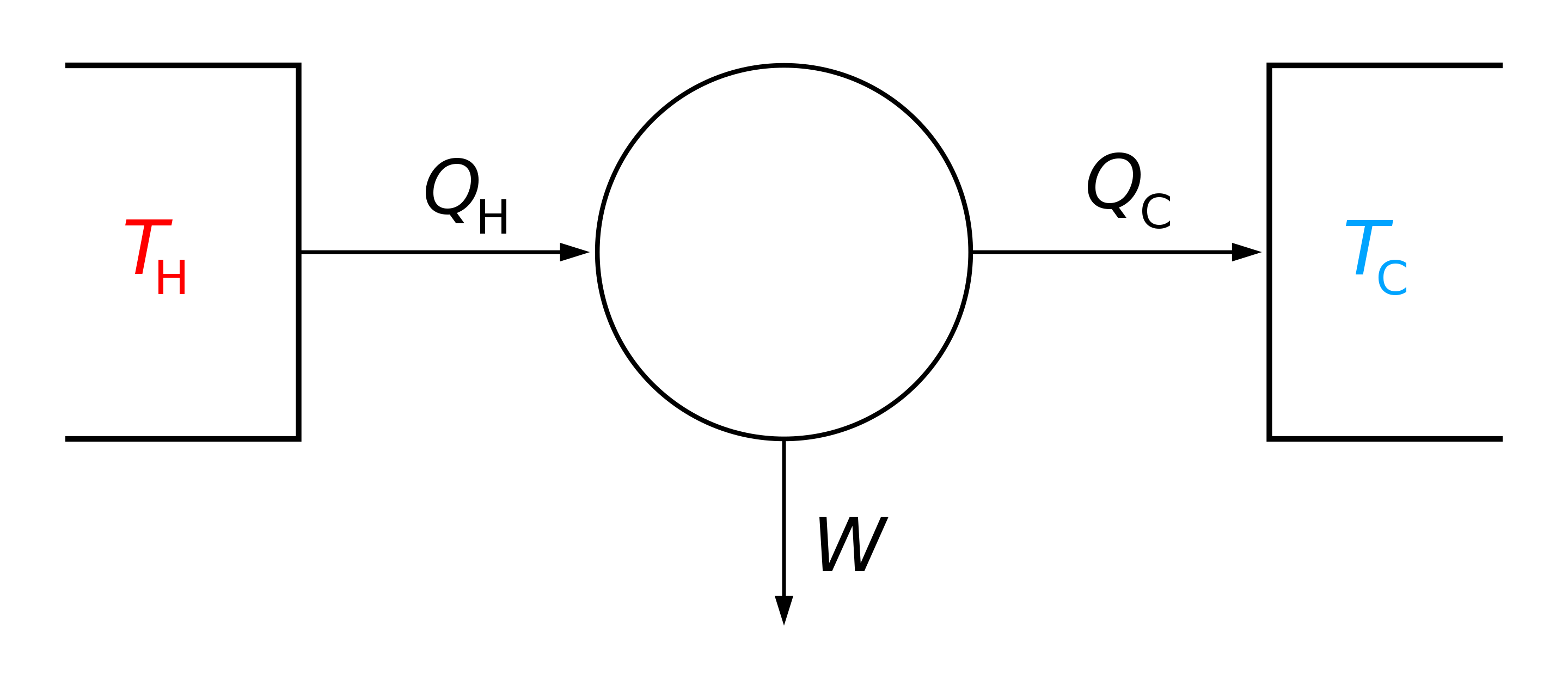
Heat -> Mechanical energy (work)
Source: Wikipedia
Laws of thermodynamics
Zeroth law
“If two systems are each in thermal equilibrium with a third, they are also in thermal equilibrium with each other.”First law
“In a process without transfer of matter, the change in internal energy, \(\Delta U\), of a thermodynamic system is equal to the energy gained as heat, \(Q\), less the thermodynamic work, \(W\), done by the system on its surroundings.”Second law
“Heat does not spontaneously flow from a colder body to a hotter body.”Third law
“As the temperature of a system approaches absolute zero, all processes cease and the entropy of the system approaches a minimum value.”
Read more: Wikipedia
Three efficiencies
- 1st law: actual, thermal efficiency;
\(\eta_1 =\frac{W_{net}}{Q_{in}}=\frac{Q_{high}-Q_{low}}{Q_{high}}=1-\frac{Q_{low}}{Q_{high}}\) - Carnot: maximum possible efficiency;
\(\eta_c =\frac{W_{net}}{Q_{high}}=\frac{T_{high}-T_{low}}{T_{high}}=1-\frac{T_{low}}{T_{high}}\) (Kelvin)
- 2nd law: comparing 1st and Carnot;
\(\eta_2 =\frac{\eta_1}{\eta_c}\)
Read more: Sadi Carnot
A gas turbine engine
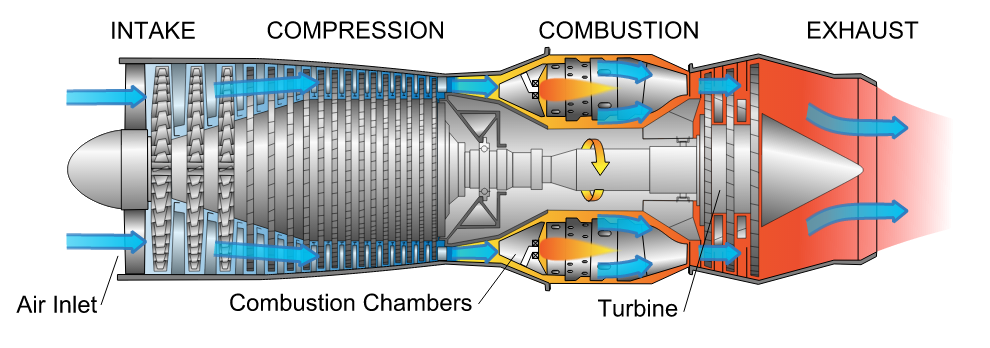
Source: Wikipedia
A steam coal plant
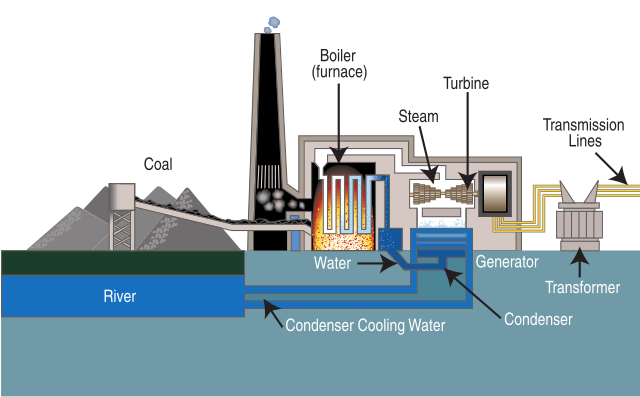
Source: Wikipedia
Brayton cycle vs. Rankine cycle
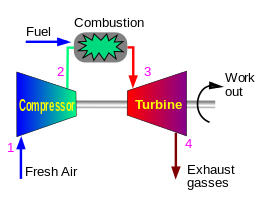
Jet engine, gas turbine
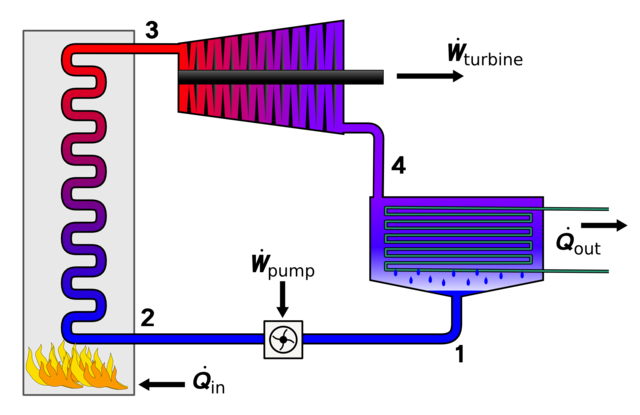
Steam engine, steam turbine
Read more: Wikipedia Brayton cycle and Rankine cycle
Brayton cycle vs. Rankine cycle
| Brayton Cycle | Rankine Cycle |
|---|---|
| Jet, Gas turbine | Steam turbine |
| Open | Open/closed circuits |
| Working fluid in gaseous phase | Working fluid phase change |
Read more: Wikipedia Brayton cycle and Rankine cycle
Largest coal plant in the U.S.
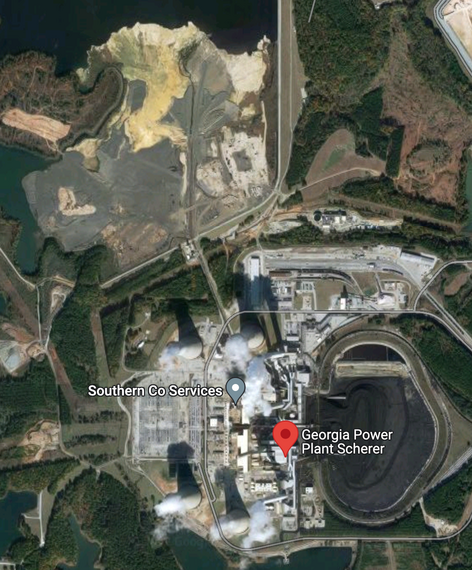
Georgia Power plant Scherer (3,720 MW)
Can you identify the components
- Coal storage
- Generating unit
- Cooling stack
- Bottom ash landfill
- Sub-station
- Transimission lines
- Waste/pollution management
Source: Google Map, read more: Nowhere to hide
Combined cycle
Read more: Tennessee Valley Authority
CCGT diagram
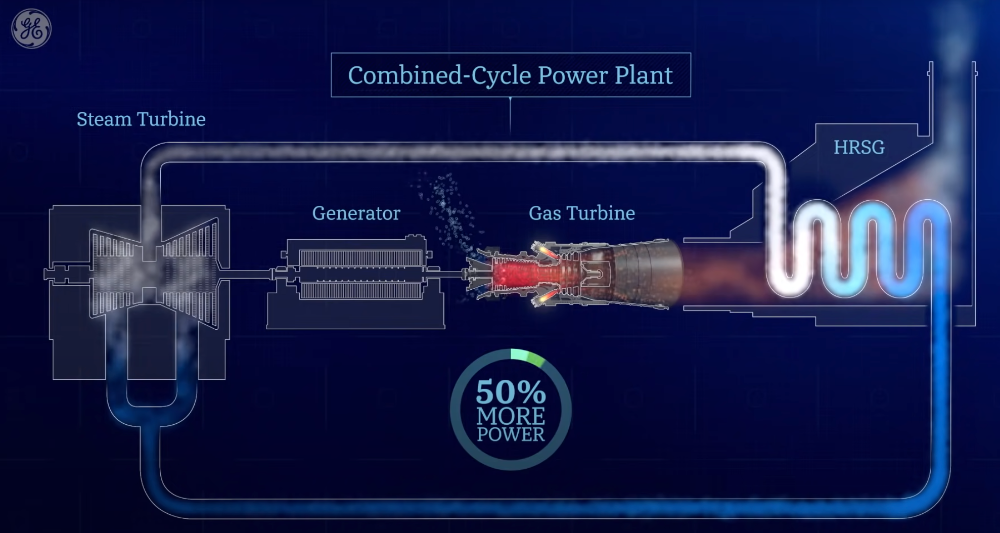
Read more: GE Power
Recall updating Rosenfeld Plant?
| 2010 | 2021 | |
|---|---|---|
| Size (MW) | 500 | 940 |
| Capacity Factor | 70% | 43% |
| Generation (TWh/yr) | ~ 3 | ~ 3.6 |
| Emissions (Mt/yr) | ~ 3 | ~ 3.5 |
- NYC electricity use in 2020: ~4 TWh/year
Source: Koomey et al. (2010)
Nuclear
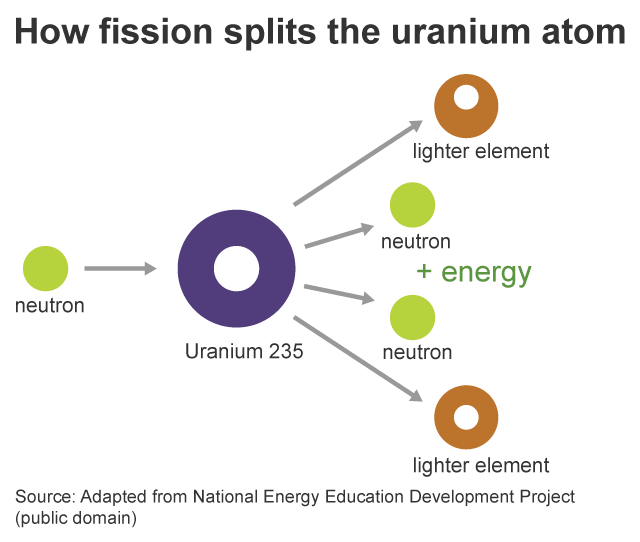
Nuclear fission
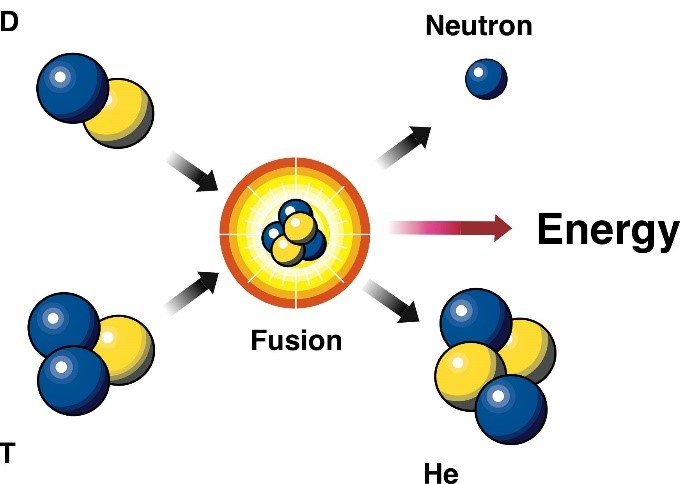
Nuclear fussion
Read more: EIA, Nuclear explained; DOE, Nuclear fusion reactions
Nuclear power plants
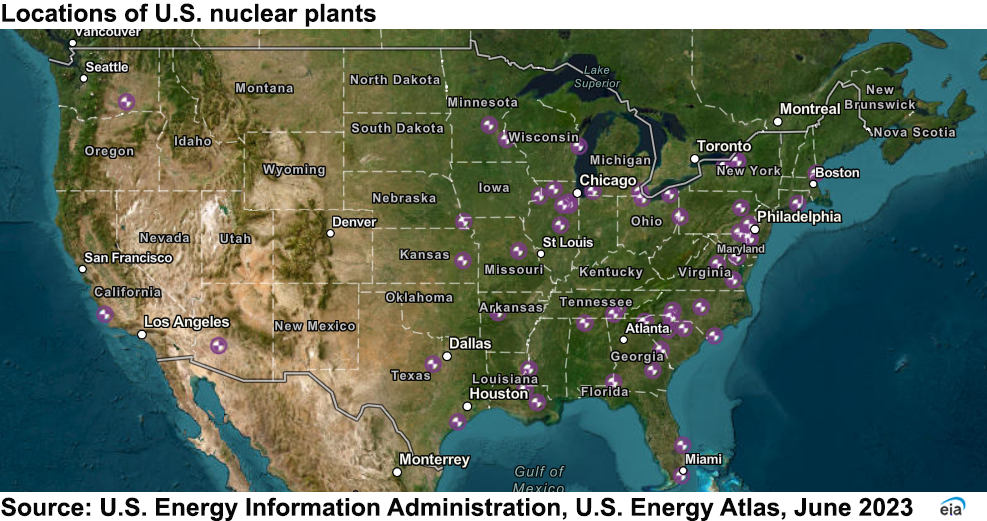
Read more: EIA, Nuclear explained
Nuclear plant design
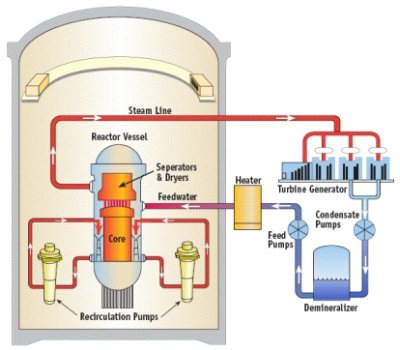
Diagram of a boiling-water nuclear reactor
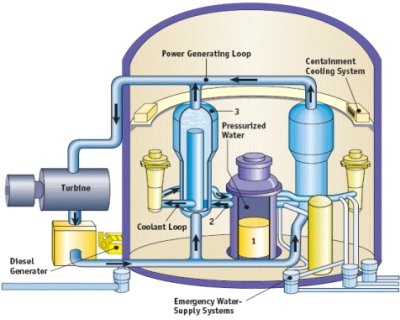
Diagram of a pressurized-water nuclear reactor
Read more: EIA, Nuclear explained
Nuclear fuel cycle
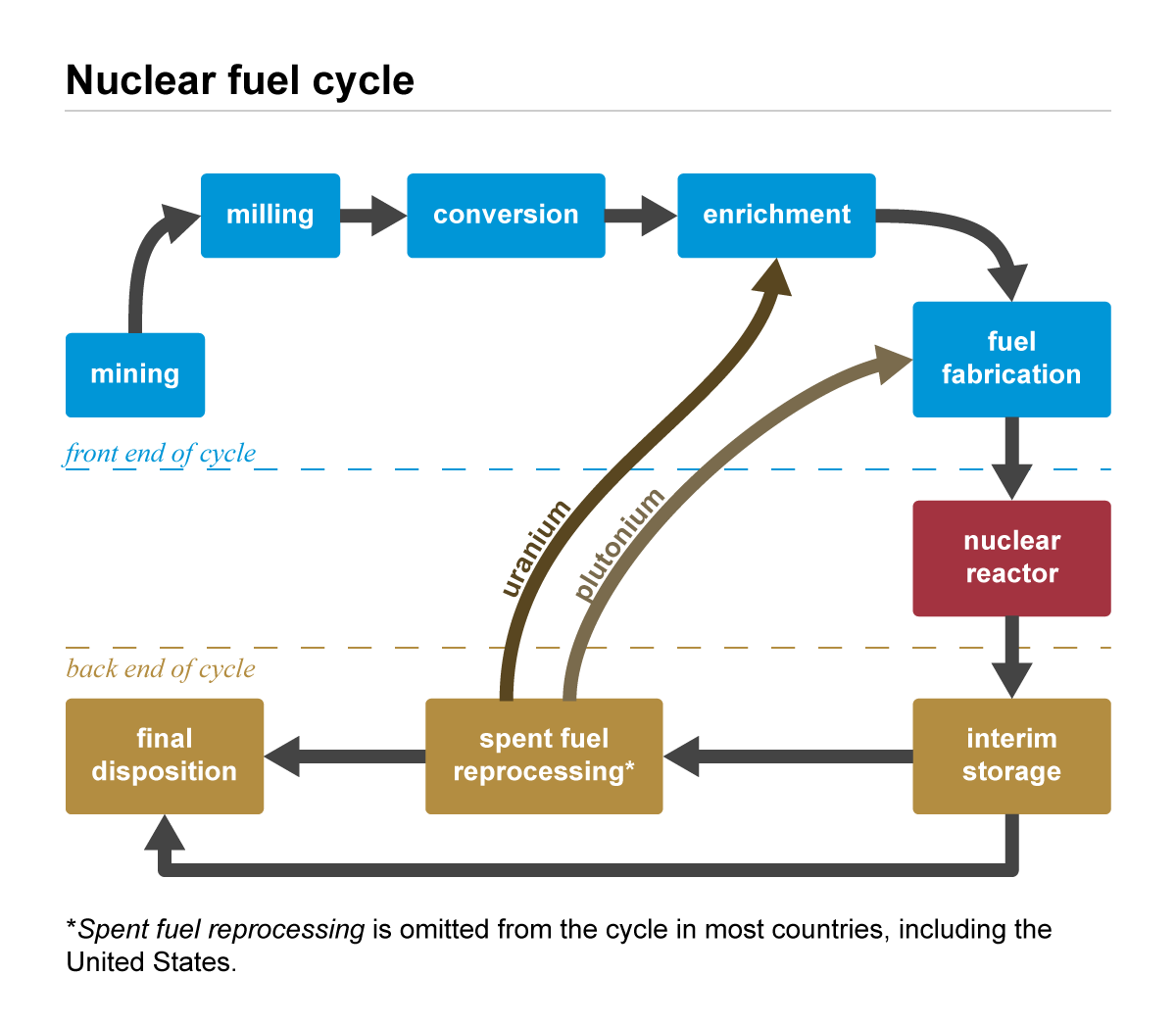
Read more: EIA, Nuclear explained
Next generation of nuclear technology
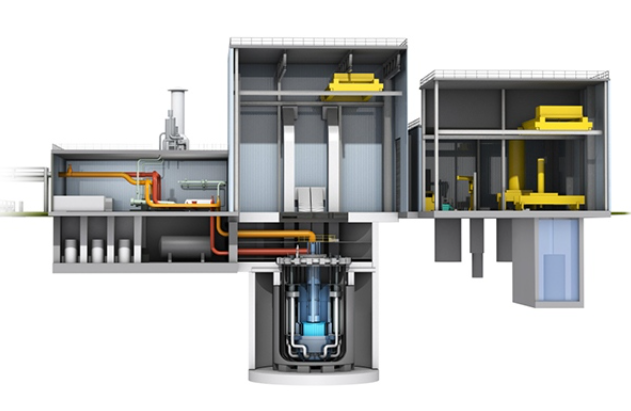
- Modality
- Lower capital costs
- Siting flexibility
- Higher efficiency
- Safe and security
- Industry and manufacture
- Economic
Read more: DOE, Benefits of Small Modular Reactors, TerraPower
Livermore Fusion breakthrough
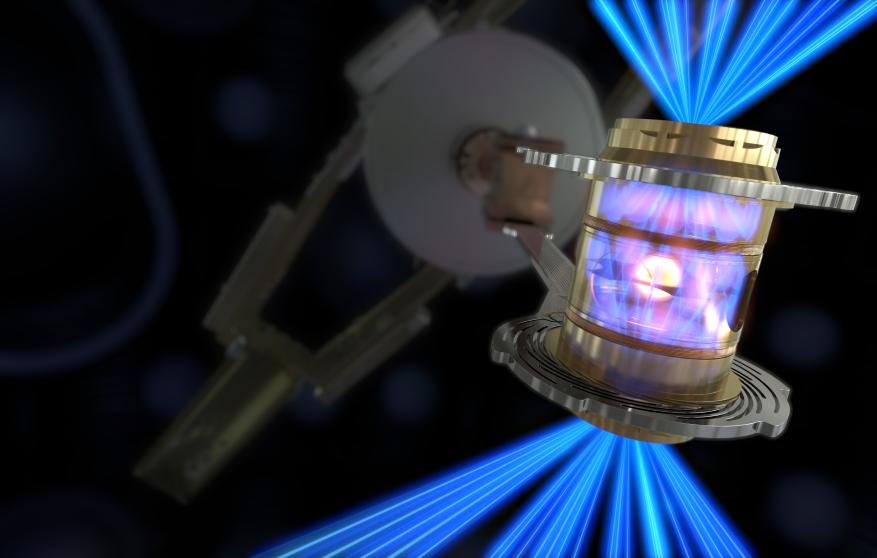
Read more: LLNL
Hydro

Hydropower
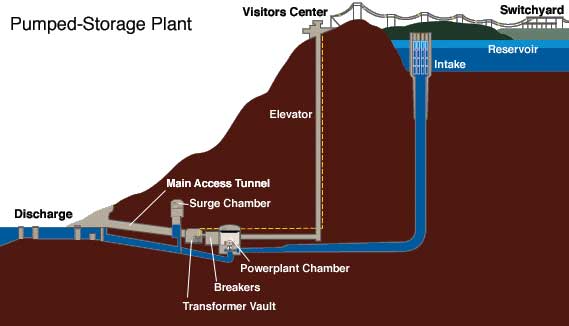
Pumped storage hydropower (PSH)
Source: TVA
How a lithium-ion battery works
Source: Union of Concerned Scientists
Battery management system
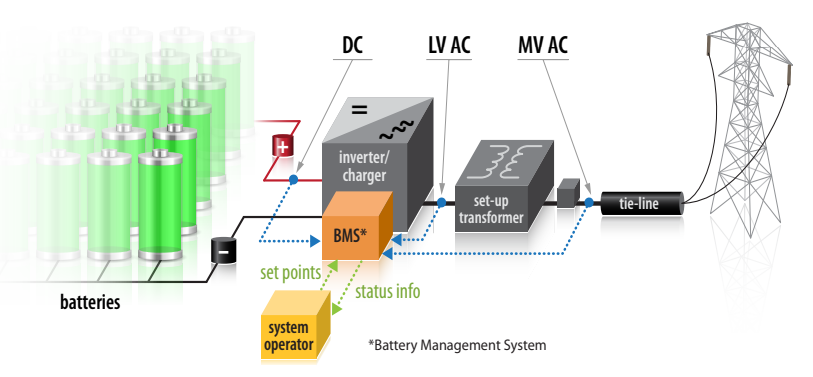
- Rated power capacity
- Energy capacity
- Storage duration
- Cycle life/lifetime
- Self-discharge
- State of charge
- Round-trip efficiency
Read more: NREL, Grid-scale battery storage
Long duration storage
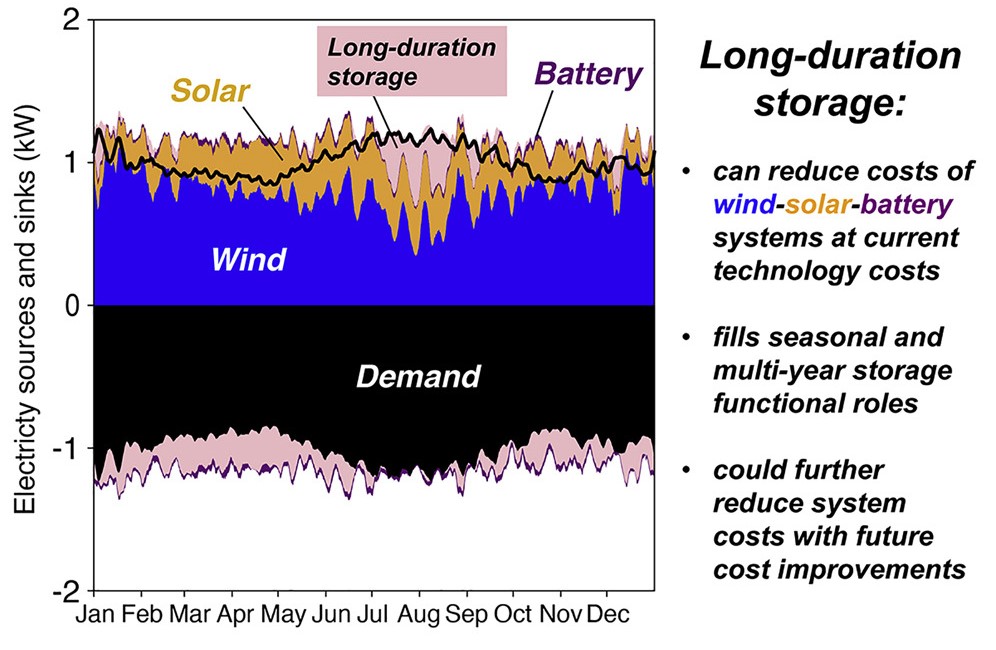
Source: Dowling et al. (2020)
Summary
- Theory - learn and understand the physics of energy technologies:
- thermaldynamics (fossil)
- kinematics (wind)
- light and semiconductor (solar)
- gravity (hydro, tidal)
- atomic (nuclear)
- thermaldynamics (fossil)
- Practice - learn all kinds of corrections based on real-world situation
- The physics doesn’t change, corrections help us to do better jobs in simulation and projections
Social > technology challenges
Photo credit: Gang He; Read more: National Academies